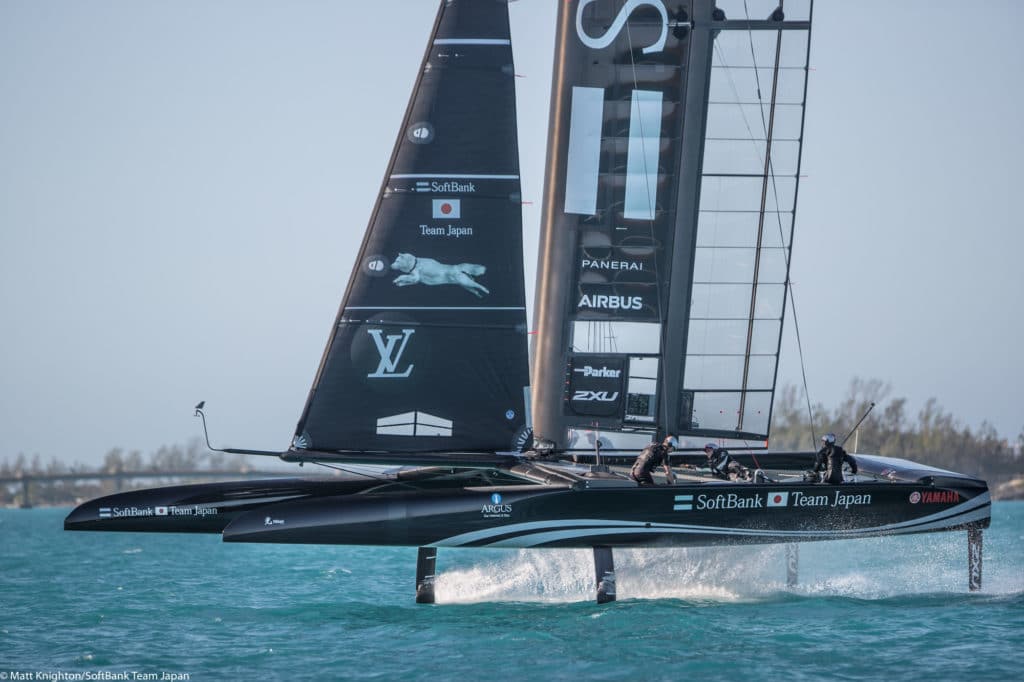
The battle that is the America’s Cup may start in 52 days, but make no mistake; the war of the foils has been raging for years.
As teams begin to line up with their America’s Cup Class race yachts in Bermuda, the dagger board shapes deployed are coming under increased scrutiny – what may look like similar designs to an untrained eye, actually yield multitudes of differences when matched against one another.
You might say Nick Holroyd, Technical Director for SoftBank Team Japan – who led the design of the first foiling America’s Cup yacht four years ago – has some expertise in this field and took the time to share his perspective on what he’s been seeing in the daily recon reports.
“How are they spending their allocation strategically? That’s what I’m asking”, said Holroyd.
“Can you perceive from their designs that they’re an upwind, downwind, or a maneuvering boat – where do they see the race being won? Once you’ve picked that strategic approach then you can look at the details of how they got there.
“For sure we’re seeing a real split in the fleet in terms of the stability that’s inherently designed into the boards. That may well reflect how far advanced those teams are with their control systems. The overall stability is the inherent stability in the board plus the quality of control system – how fast you can get boards to target – plus how good the human interface is for the helmsman.”
Yet wrapped in the stability equation, Holroyd is keenly watching for board failures on other teams as he dissects the structural engineering that other designers have gambled on in an effort to solve as many of the performance tradeoffs as possible.
“To make these boats efficient you’re forced into making some extreme structures”, said Holroyd.
“There’s an incentive in light air boards to have a lot of span – which is structurally difficult – and for heavy air boards you’re trying to design them to not cavitate, and that’s also structurally difficult.”
Asked how a team might fair if they had broken a foil during practice at this point in the competition, he was quick to assert that the time to build a new dagger board has long since passed.
“You’re well inside the timeframe to built a new board in time so if you have a major structural issue at this point that warrants ‘open heart surgery’, that can take you off the water for 3-4 weeks. These patients take a while to recover.
“If you were having structural issues in your boards at this stage of your campaign you would be nervous.”
As for the question of whether the Cup will be decided by foil design or control systems, Holroyd explained it’s still a game that’s decided by a multitude of factors.
“In the America’s Cup you’ve always had a whole bunch of things you’ve got to do right – you’ve got to raise the money, get the team going, sail well, have a fast boat, be reliable, have good meteorology – and frankly screwing up any one of those things could loose you the race. You have to have the complete package.”









